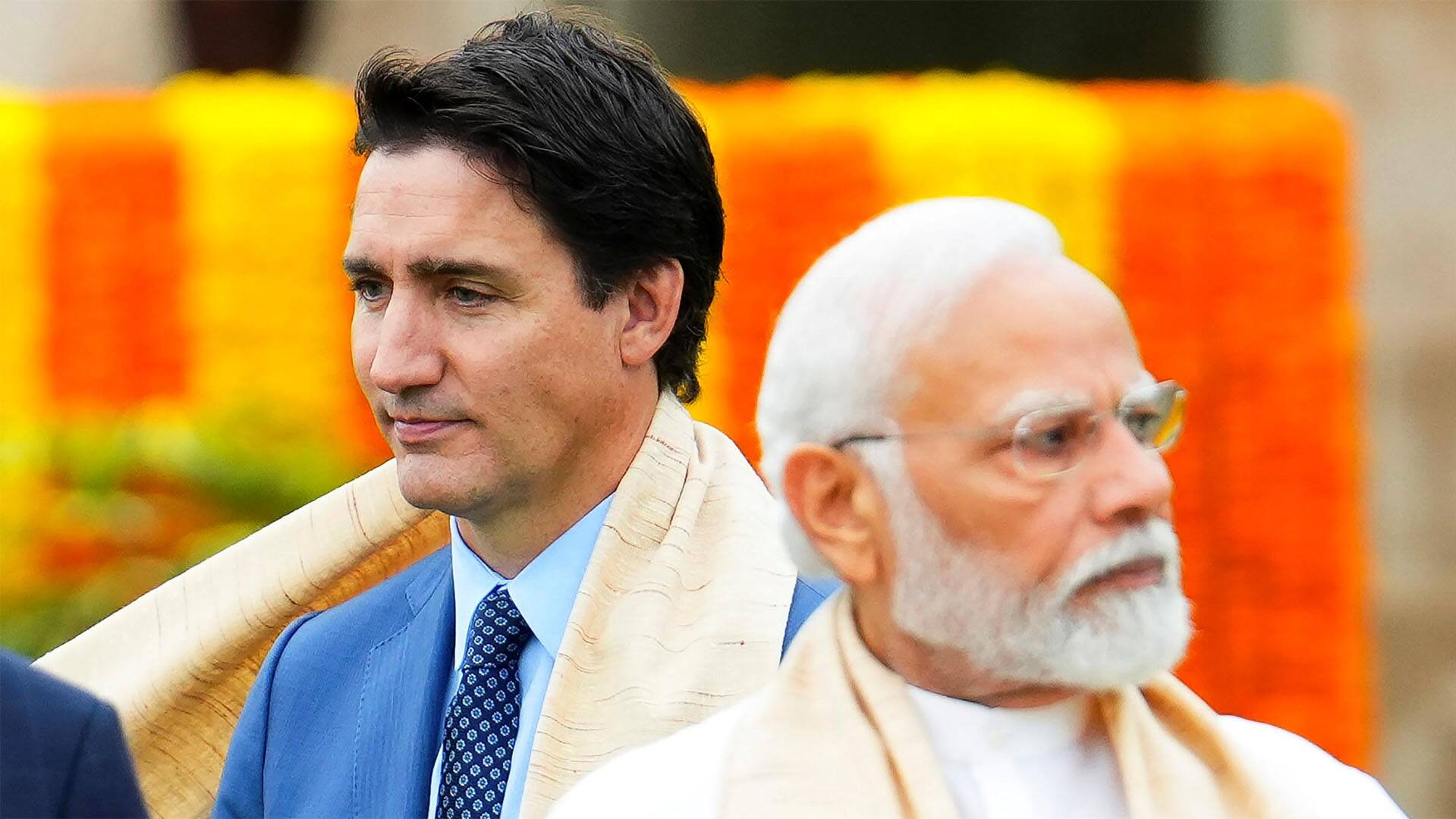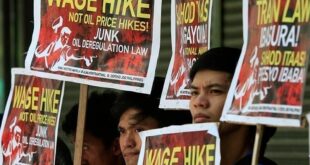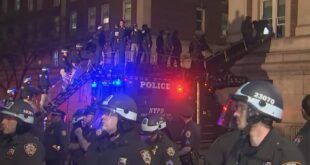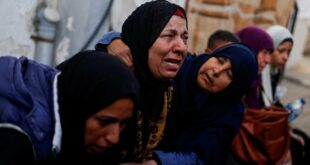Some key points in history for the Khalistan separatist movement in India and Canada.

The diplomatic relationship between Canada and India exploded this week when Canadian Prime Minister Justin Trudeau levelled the accusation that India had been involved in the killing of a Canadian citizen at a Sikh temple in British Columbia in June.
Hardeep Singh Nijjar, 45, was shot dead outside a gurdwara in Surrey, B.C., on June 18. A leader among the Sikh diaspora in Canada, Nijjar had been active with a group supporting the push for an independent Sikh homeland in northern India called Khalistan.
Nijjar’s death and the ongoing tension between Canada and India are another piece of the Khalistan debate, which experts have described as complex, evolving and deeply emotional.
This is a deeper look into its history.
The Sikh Empire
Experts have said there are many different points in history that play a significant role in the Khalistan movement, with one key marker being the Sikh Empire of the early 1800s.
The empire was a kingdom in the Punjab region led by Maharaja Ranjit Singh, with the province of Lahore serving as the Sikh capital.
Today, many separatists point to the empire as proof that a successful, autonomous Sikh rule is possible.
“It wasn’t until the British came that his empire crumbled,” said Satwinder Bains, director of South Asian Studies at the University of the Fraser Valley in Abbotsford, B.C.
“I think people go back to that golden age and dream that is something that we will get back, that we’ll be autonomous, that we’ll know our boundaries,” she said.

What is Khalistan? A look at the movement for an independent Sikh state
Some Sikhs have historically been seeking an independent Sikh homeland in northern India called Khalistan. Experts say the history of the movement is complex, emotional and evolving.
India divided after British colonization
Many experts say that another key point for the Khalistan separatist movement was partition — the division of India when British colonial rule ended in 1947.
After the British left, millions of Muslims fled west to the newly formed country of Pakistan. Most Hindus and Sikhs chose to stay in India, but the country remained a Hindu-majority nation.
“This was important because it led to questions concerning the Sikh identity — the Sikhs themselves not having a homeland,” said Indira Prahst, an instructor in anthropology and sociology at B.C.’s Langara College.
Despite making up a fraction of India’s population, Sikhs produced the lion’s share of the country’s food. Punjab, experts said, is still the nation’s breadbasket.
“I think Punjabis and Sikhs thought that they did get the short end of the stick because soon after that, as India developed as a nation state, there was a big stress on Punjab to feed the rest of India because it was still a burgeoning population and very little food,” said Bains.
“This [was] setting the stage for a feeling that Sikhs do not belong in the Indian nation state and that there will be no equality, that they will be second-class citizens,” said Harjeet Grewal, a professor of Asian Religions and Sikh Studies at the University of Calgary.
As the Sikh population reckoned with a lack of autonomy, poor living conditions and intense farming pressure, the idea of Khalistan — a separate, Sikh-led state within the nation — continued to take hold.
A separatist leader emerges
The separatist debate reached a violent peak in the 1980s.
Jarnail Singh Bhindranwale emerged as a leading proponent of the movement around 1982. Some saw him as a charismatic preacher, while others saw him as a violent militant leader.
“He was actually [seen as] a saint to begin with, simply asking for social reforms,” said Shinder Purewal, author of Sikh Ethnonationalism and professor in the political science department at Kwantlen Polytechnic University in B.C.
“On the other hand, he also created an aura that he could kill anyone.”

According to Grewal, Bhindranwale did not explicitly ask for a separate state, but was seen to support the movement.
“He would often say that, ‘I’m not asking for Khalistan, but if Indira Gandhi’s administration wants to give Sikhs Khalistan and that’s the way Sikhs can become sovereign, then we’ll take it,’ ” Grewal said.
In 1984, Bhindranwale and his supporters moved into Harmandir Sahib, or the Golden Temple — the holiest site in Sikhism. He used the temple in the city of Amritsar as a fortified sanctuary, he began what media reports at the time described as a “ruthless campaign of bombing, sabotage and assassination that claimed hundreds of lives.”
Purewal said Bhindranwale, even one of the “most militant” Sikh leaders, “mobilized a lot of Sikhs” over several years. Many members of the Hindu population and the Indian state felt targeted, with the killings of two Hindu politicians adding to those fears in May 1984.
Bhindranwale’s presence at the Golden Temple and the assassinations in May factored into the Indian government’s next move, Purewal said.
Operation Blue Star
That June, Indian Prime Minister Indira Gandhi ordered the military into the temple in an attack known as Operation Blue Star. Thousands of people were killed, including innocent Sikhs.
“The state narrative here is that this was meant to root out terrorists or militants … who had come to disrupt the sanctuary of the temple precinct and who had refused to leave despite many attempts to get them out,” said Grewal.

“What happens over that week is difficult to discern, partly because of the amount of misinformation, but thousands of Sikhs lose their lives.”
Bhindranwale was among those killed. To some, he became a martyr for the separatist movement.
Indian prime minister assassinated
Five months after the attack at the Golden Temple, prime minister Gandhi was assassinated while walking to her office on the morning of Oct. 31, 1984.
“Immediately, the first news that comes out is that two Sikh bodyguards have killed her,” said Bains.
Over the following days, thousands of Sikhs were killed in widespread riots. Sikh leaders put the number of dead at 10,000.
The Indian government, widely seen as complicit, refuses to recognize the killings as genocide and estimated the number of dead to be less than 3,000.
“After 1984, it was a violent confrontation on both sides,” said Prahst, the Langara College instructor, who specializes in race and ethnic relations.

Air India bombings
On June 23, 1985, Air India flight 182 was bombed while en route from Montreal to India.
All 329 people on board, many of whom were Canadians, were killed when the plane exploded off the coast of Ireland. Two baggage handlers were also killed in a separate explosion at Tokyo’s Narita airport.
Today marks thirty-eight years since Air India Flight 182 was blown up over the Atlantic Ocean. Three hundred and twenty nine people were killed- the vast majority of them were Canadians. But a new poll shows a lot of people don’t know anything about the massacre. We discuss why, with Angela Failler, a co-author of the book Remembering Air India: The Art of Public Mourning.
“Air India was one of the biggest acts of terrorism in Canadian history, which unfortunately, so many Canadians don’t really understand or know about,” said Prahst.
“The issue has been who’s responsible,” she continued. “I would argue the activism in Canada is unique and distinct because of Air India and it has impacted identity for many Sikh men, in part, who now feel a violent gaze conferred onto their turban.”
Khalistani separatists were accused of detonating the bomb as retribution for the violence in 1984. One member of a Khalistani group was convicted of manslaughter in connection to the bombings in 2003, while two other suspects were acquitted in 2005.

Canada’s explosive accusation against India, line by line | About That
Andrew Chang breaks down Prime Minister Justin Trudeau’s bombshell allegations in the House of Commons, accusing agents of the government of India of helping to kill Canadian citizen and Sikh activist Hardeep Singh Nijjar.
A killing on Canadian soil
Even as support for the Khalistan cause has quieted in Punjab, experts say it has carried momentum among Sikhs in Western countries like Canada, which is home to the largest Sikh population outside India.
“Khalistan is always changing in terms of how it’s being envisioned by the next generation,” said Prahst. “The Sikh diaspora today, in Canada, in England, in America, in Australia, is questioning identity and their identity is formed around activism confronting inequality.”

Indian officials have accused their Western counterparts — particularly Canada — of failing to intervene as pro-Khalistan groups threaten the Indian government, led by Modi’s Hindu-nationalist party.
“To the Indian state, the Khalistan movement is seen as the violent movement that threatens the territorial sovereignty of India,” said Neilesh Bose, an associate professor of history at the University of Victoria.
Such separatist groups include the one supported by Hardeep Singh Nijjar, a Sikh leader and Canadian citizen murdered this summer. Nijjar, 45, was shot dead inside his truck outside the Guru Nanak Sikh Gurdwara in Surrey, B.C., on June 18.
Nijjar, who was president of the gurdwara, had been branded by the Indian government as a “terrorist” and accused of leading a militant separatist group — something his supporters have denied.

Sikh leader’s son says he long suspected India had a role in father’s death
Balraj Singh Nijjar, 21, told reporters that he felt a sense of relief after Prime Minister Justin Trudeau said publicly that Canada has seen intelligence allegedly linking the Indian government to the killing of his father, Hardeep Singh Nijjar.
On Tuesday, Trudeau said Canada’s national security apparatus has “credible” reason to believe “agents of the Indian government” carried out the killing. India’s ministry of external affairs issued a statement rejecting Trudeau’s allegations, calling them “absurd.”
Trudeau told media Tuesday before a cabinet meeting that the federal government was not looking to provoke or escalate the situation, but was presenting the facts as it understood them.
“The government of India needs to take this matter with the utmost seriousness,” he said.
Credit belongs to : www.cbc.ca
 Atin Ito First Filipino Community Newspaper in Ontario
Atin Ito First Filipino Community Newspaper in Ontario






